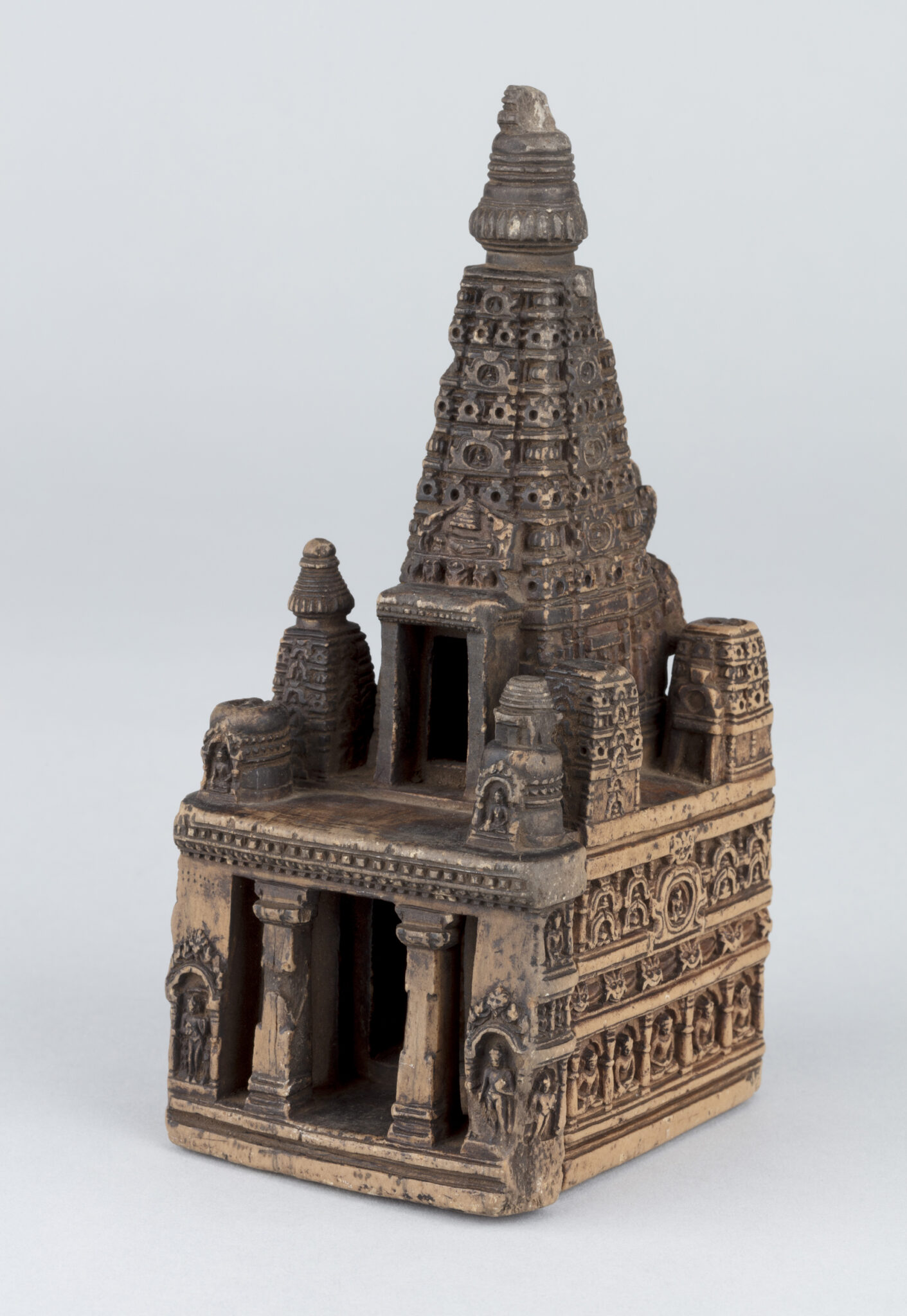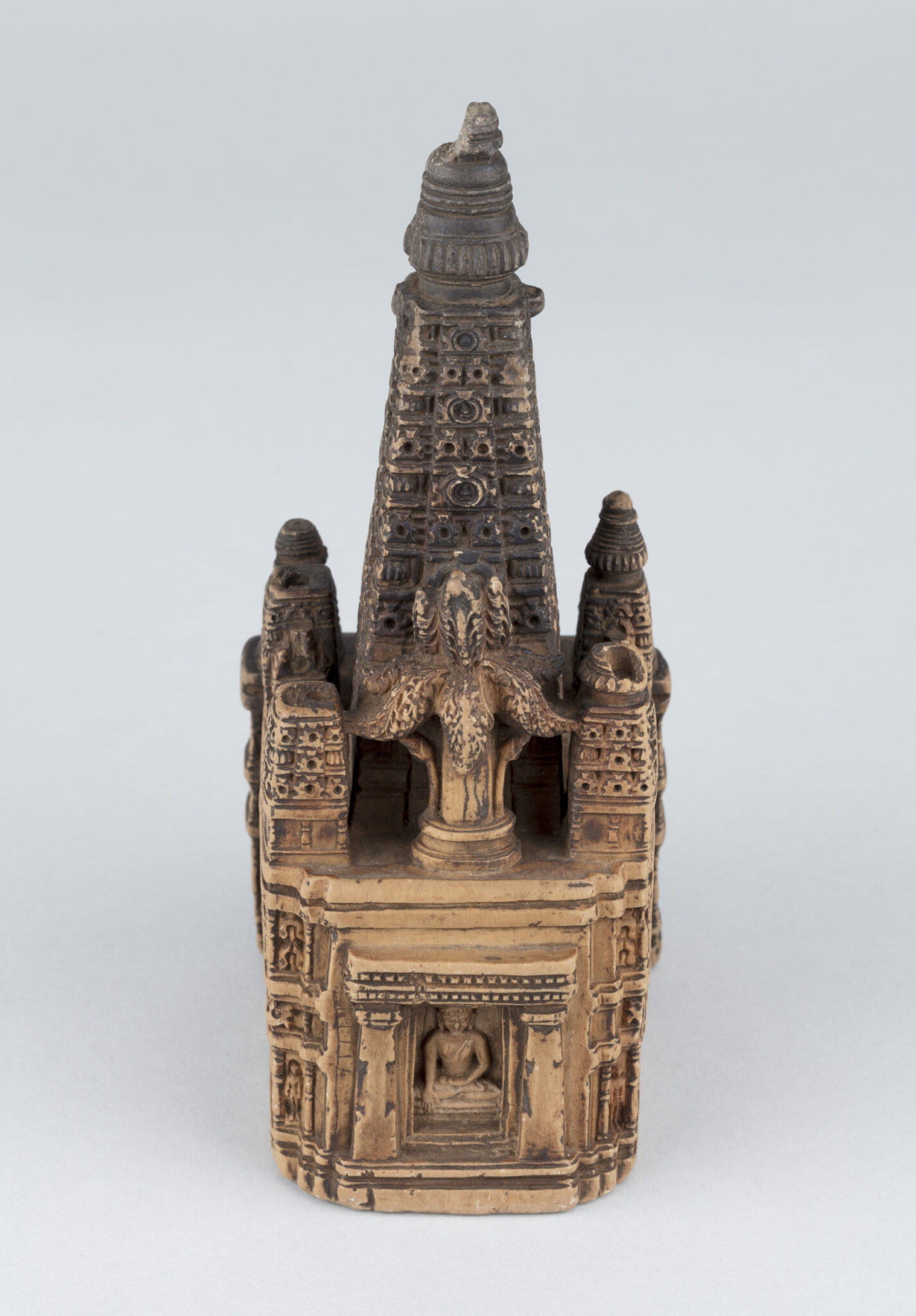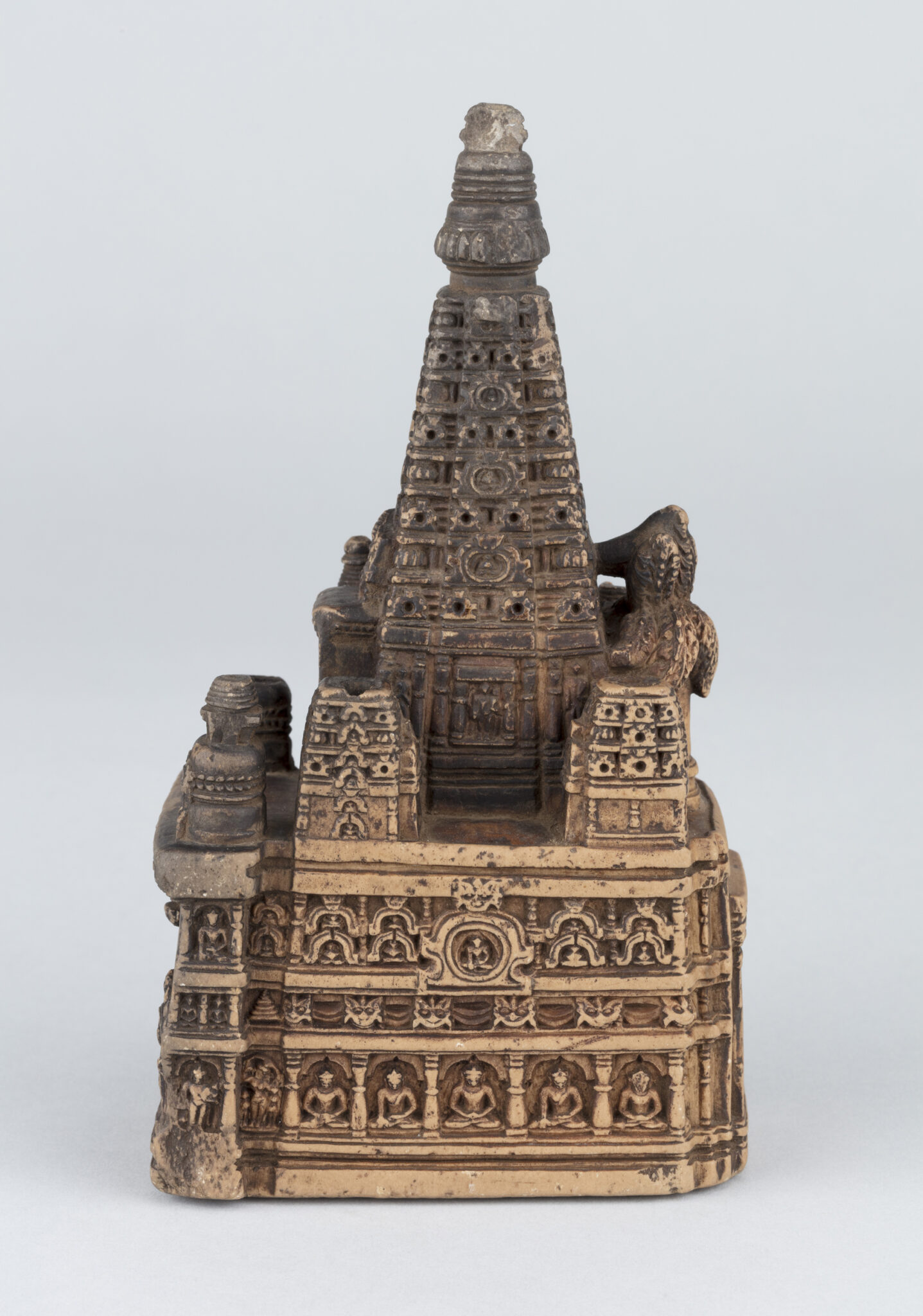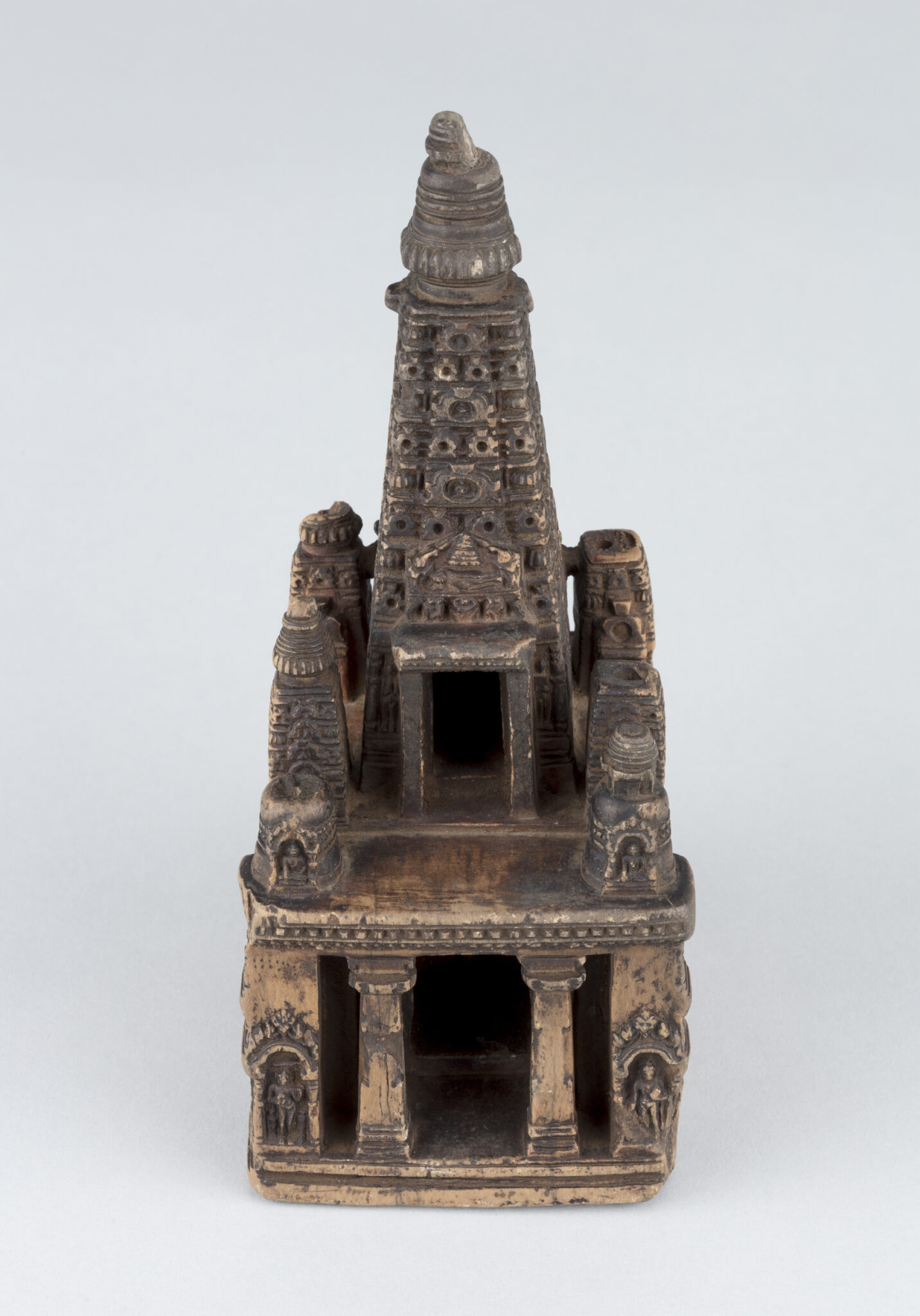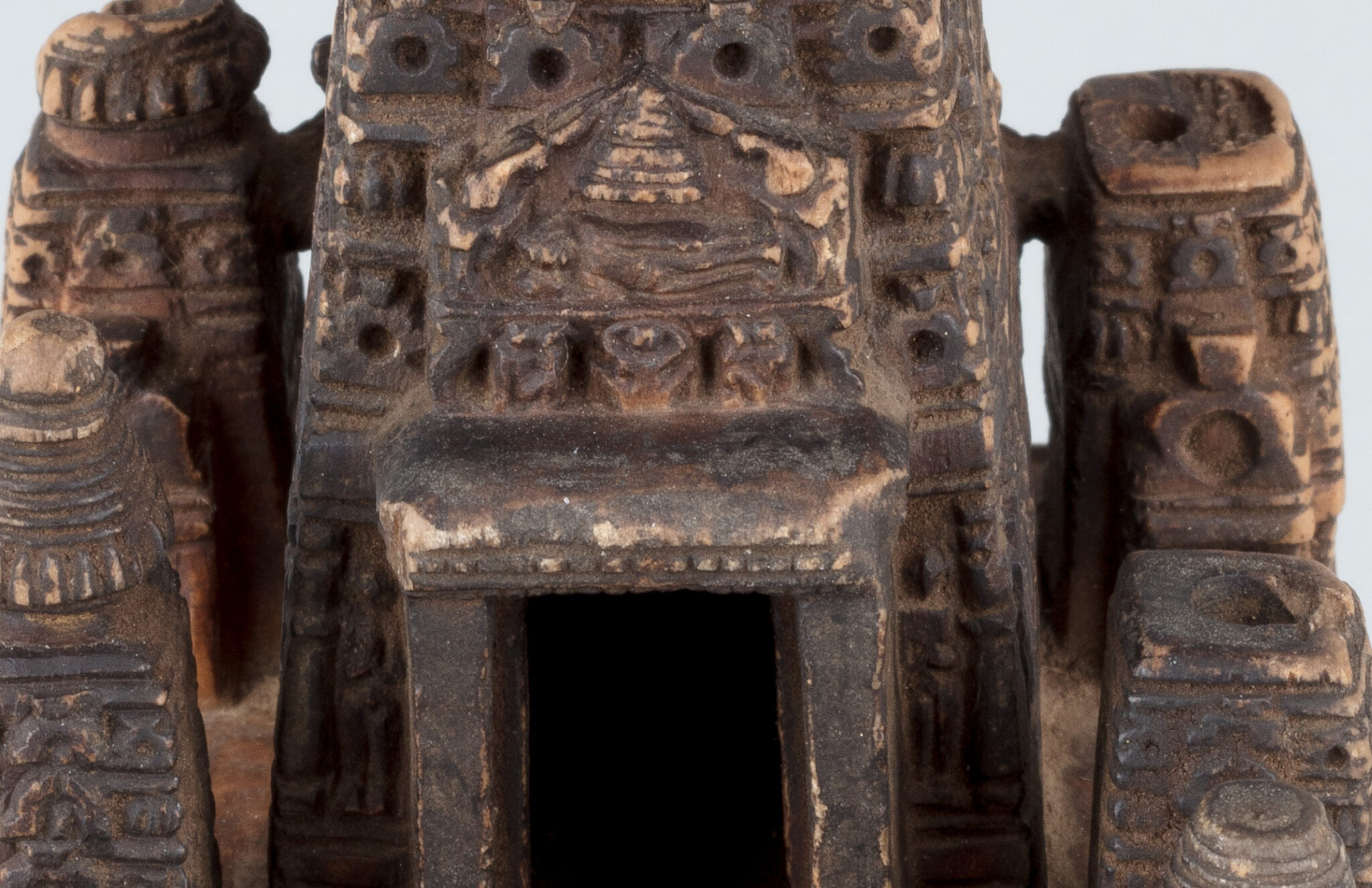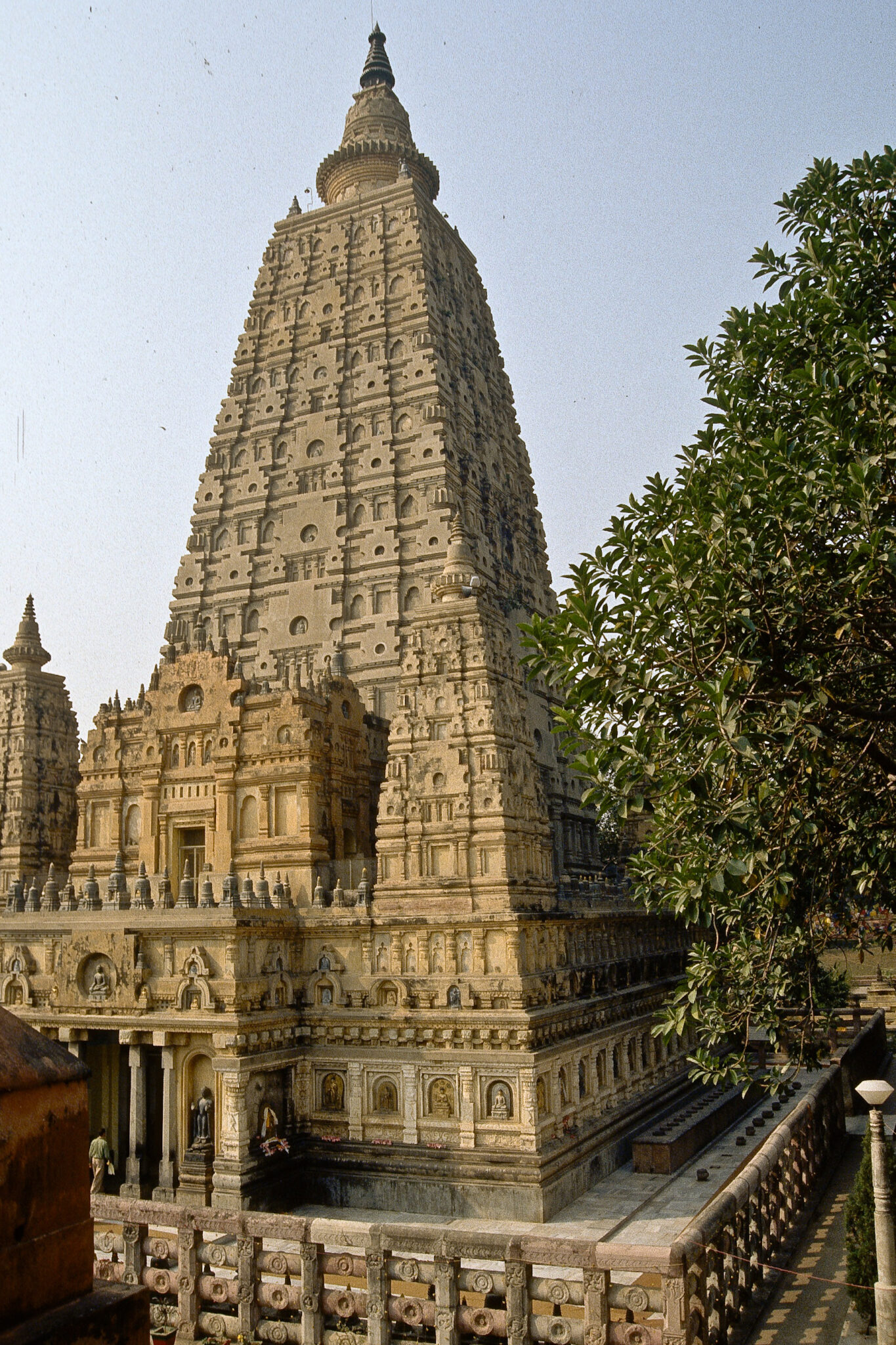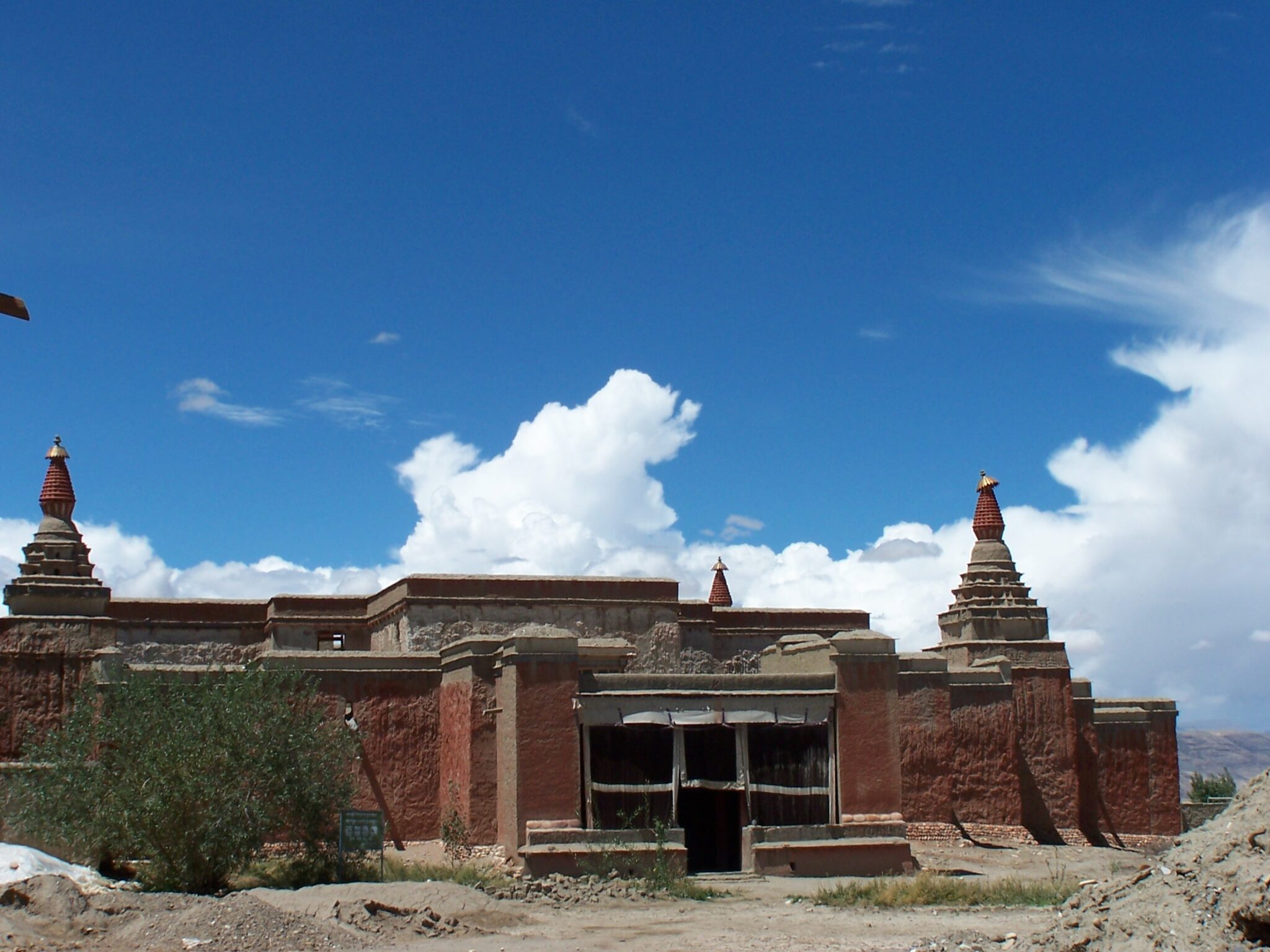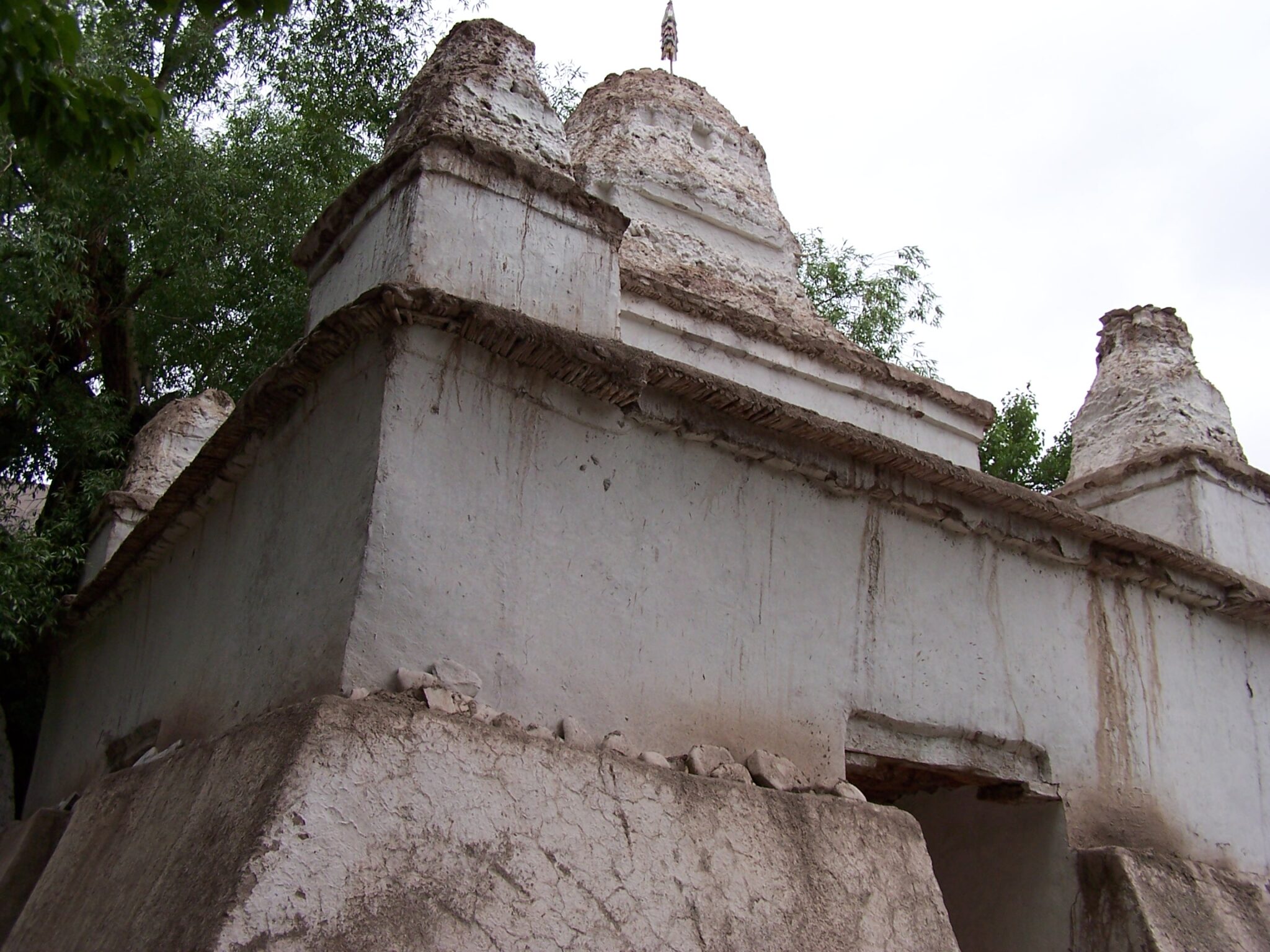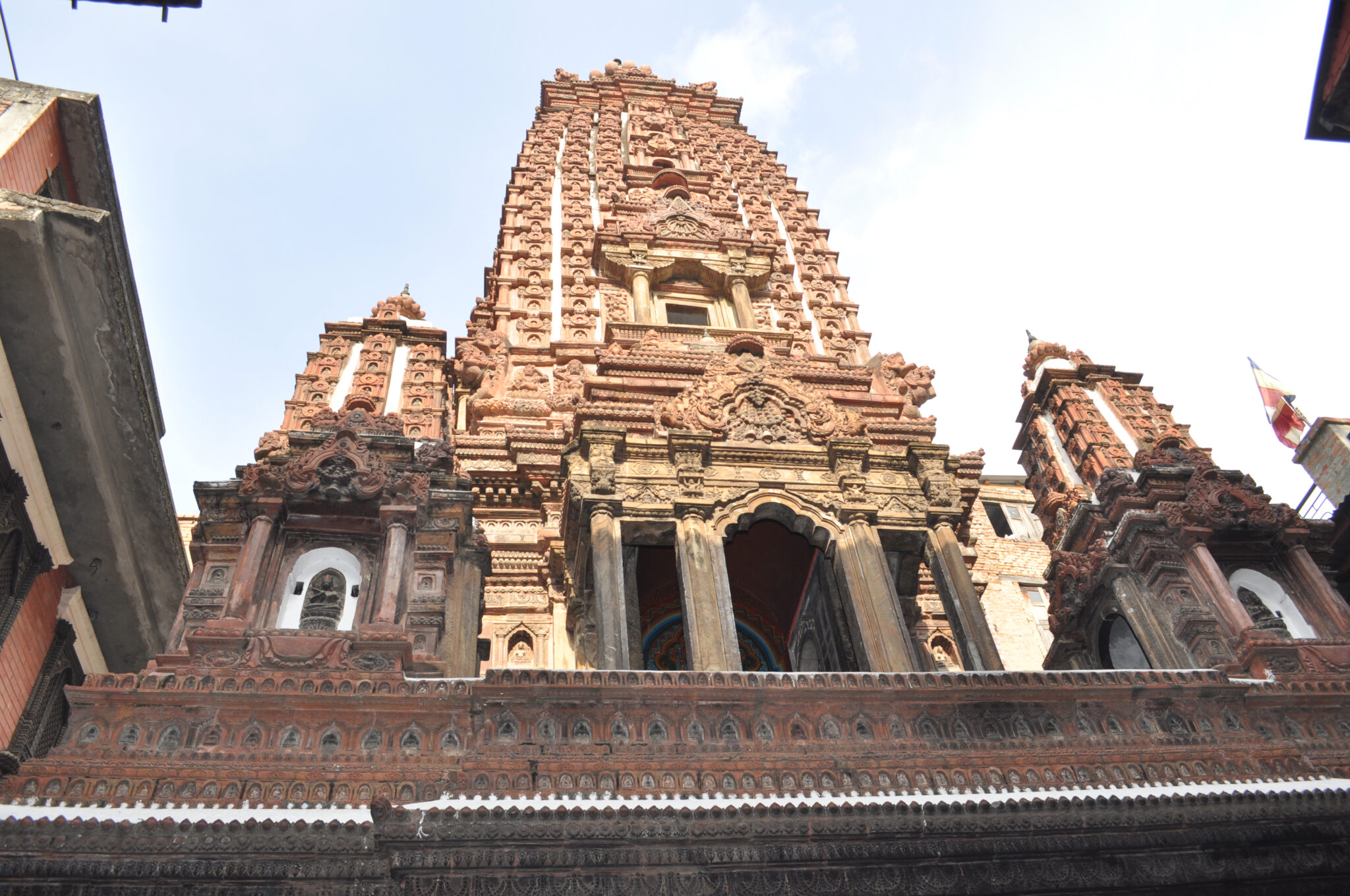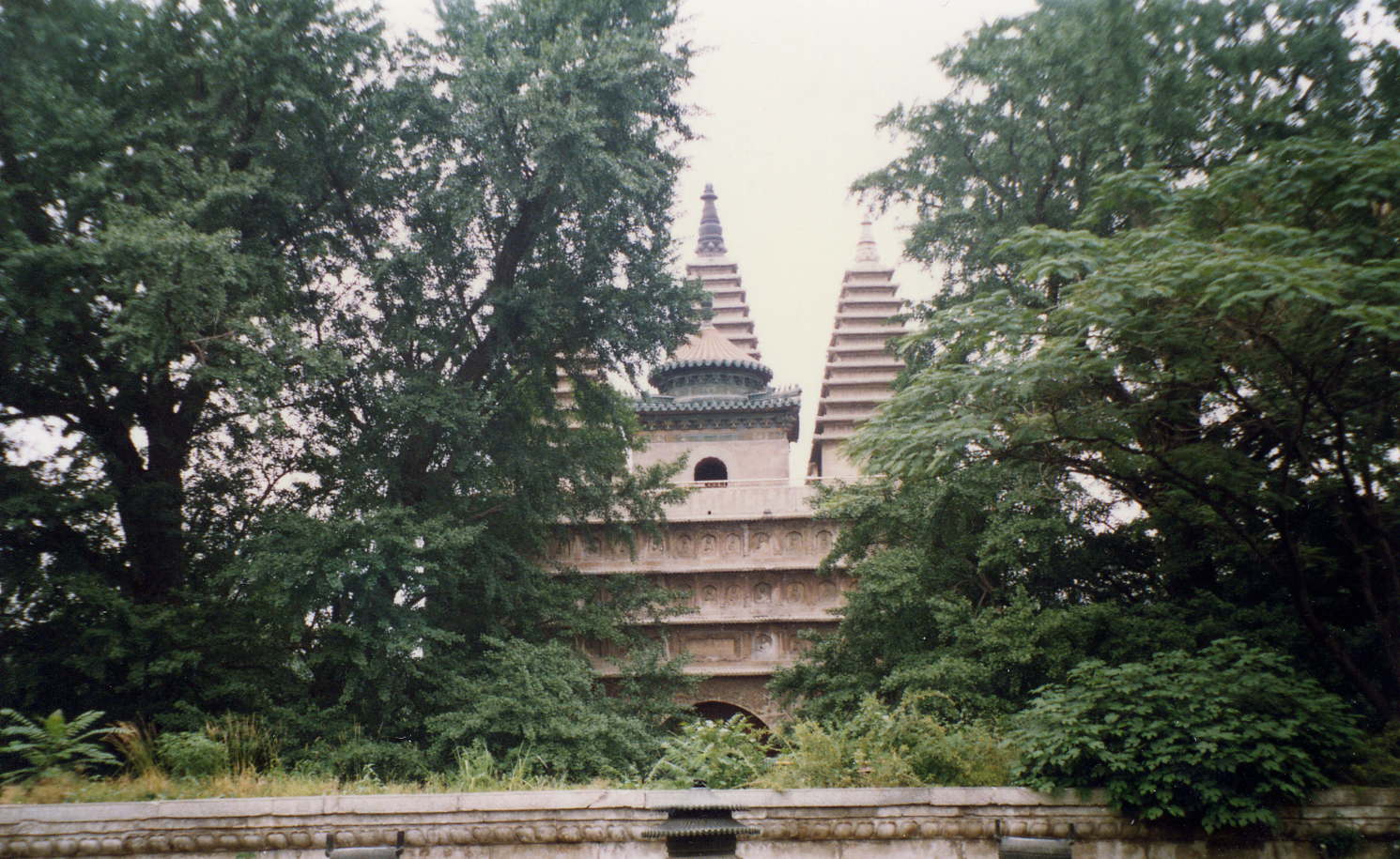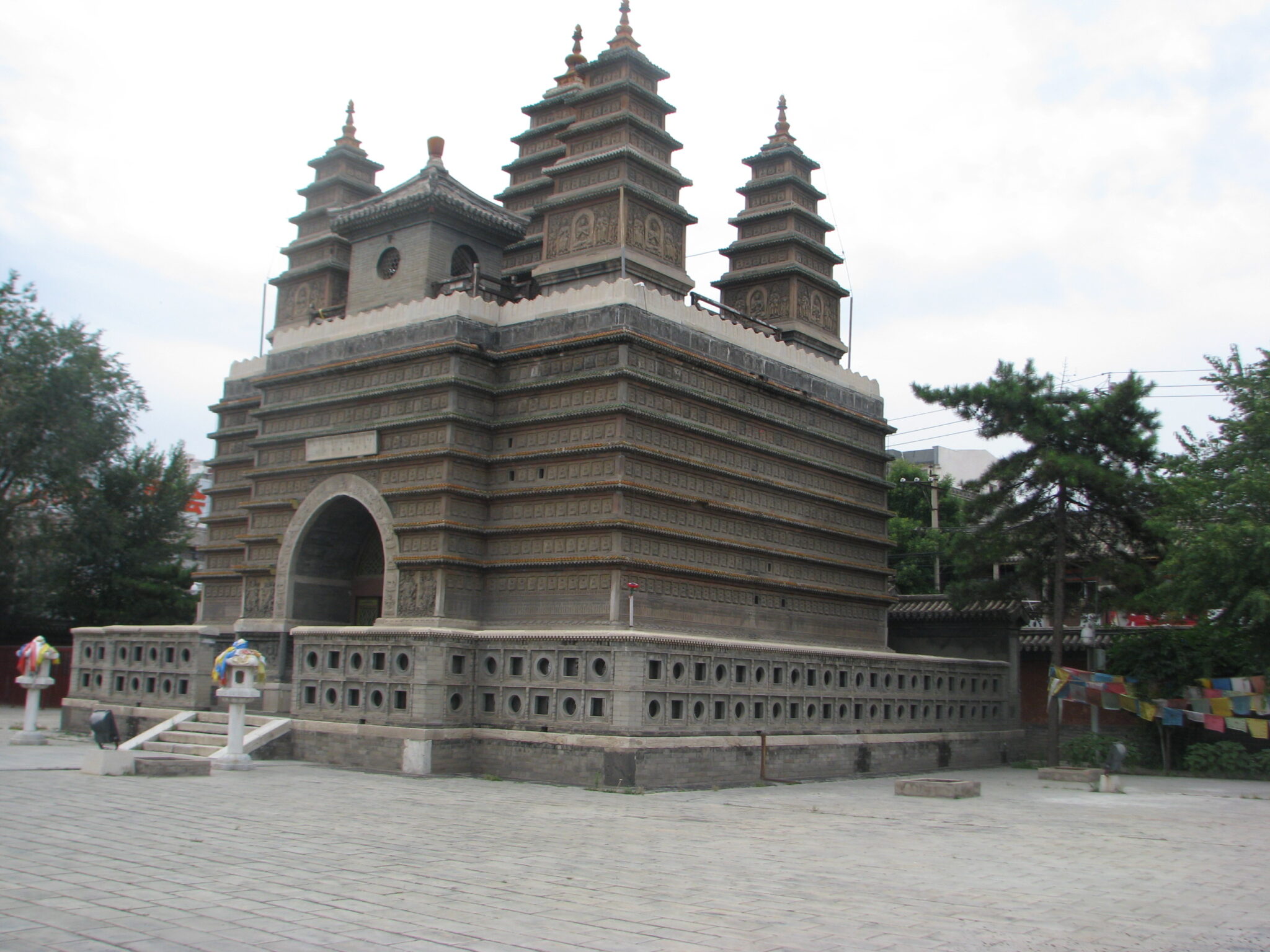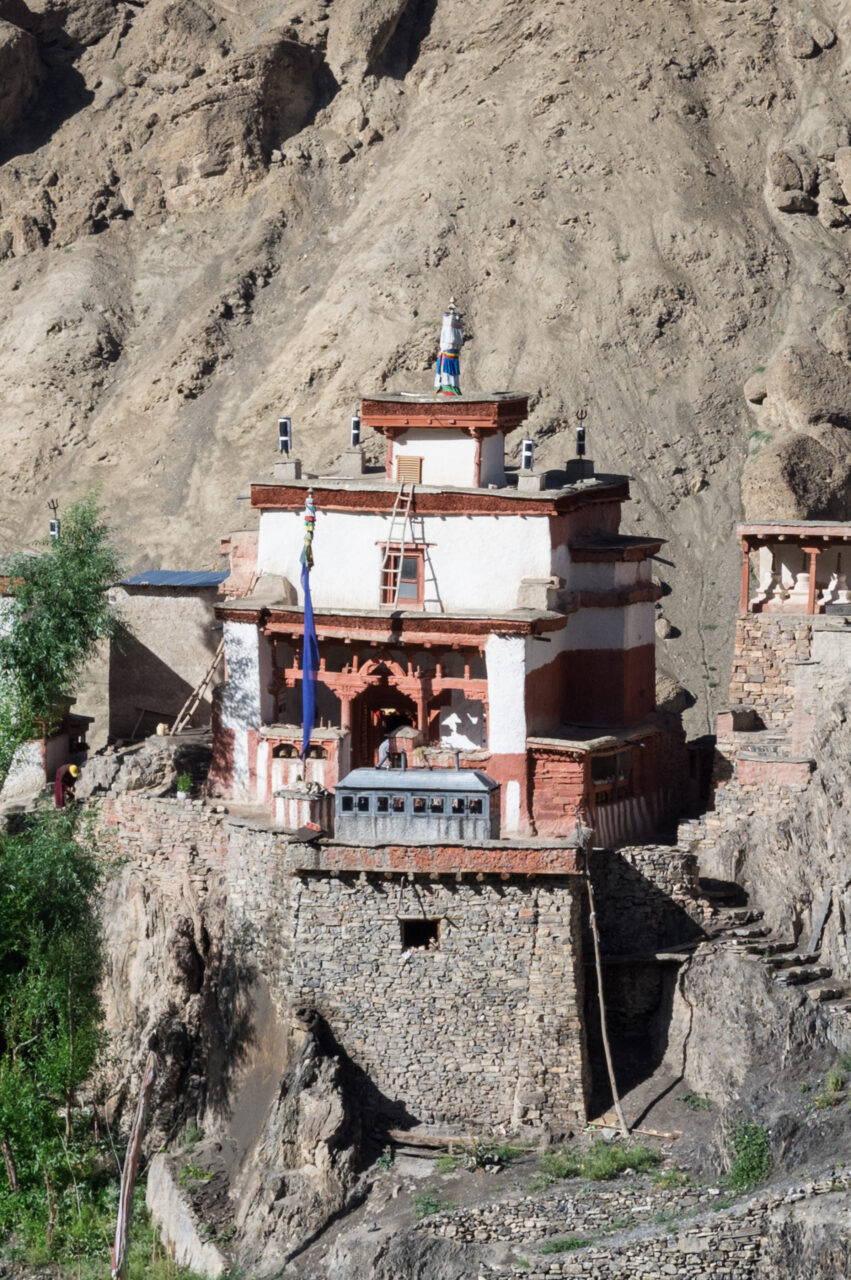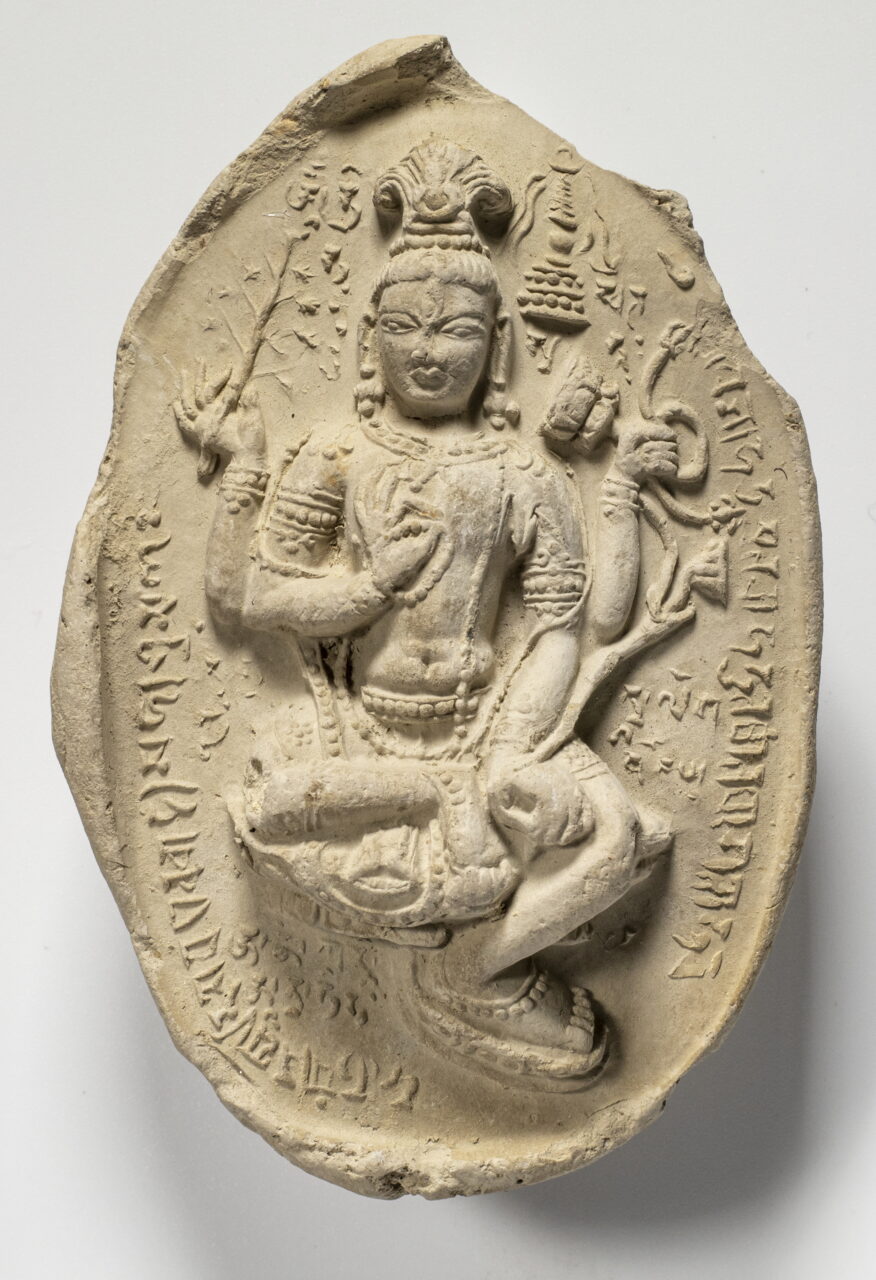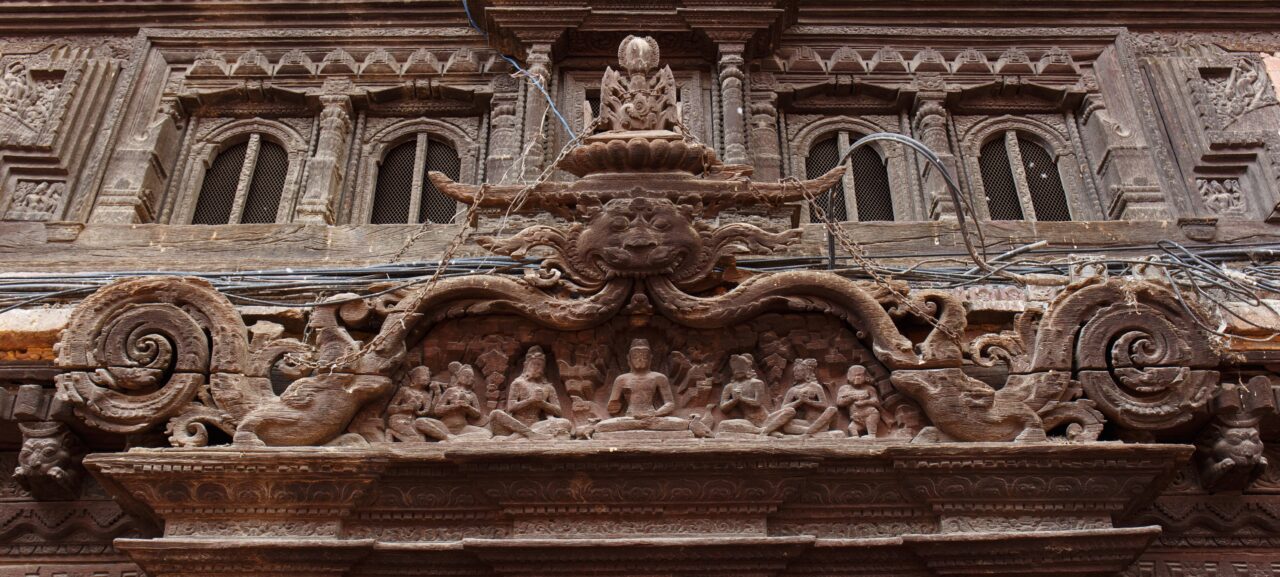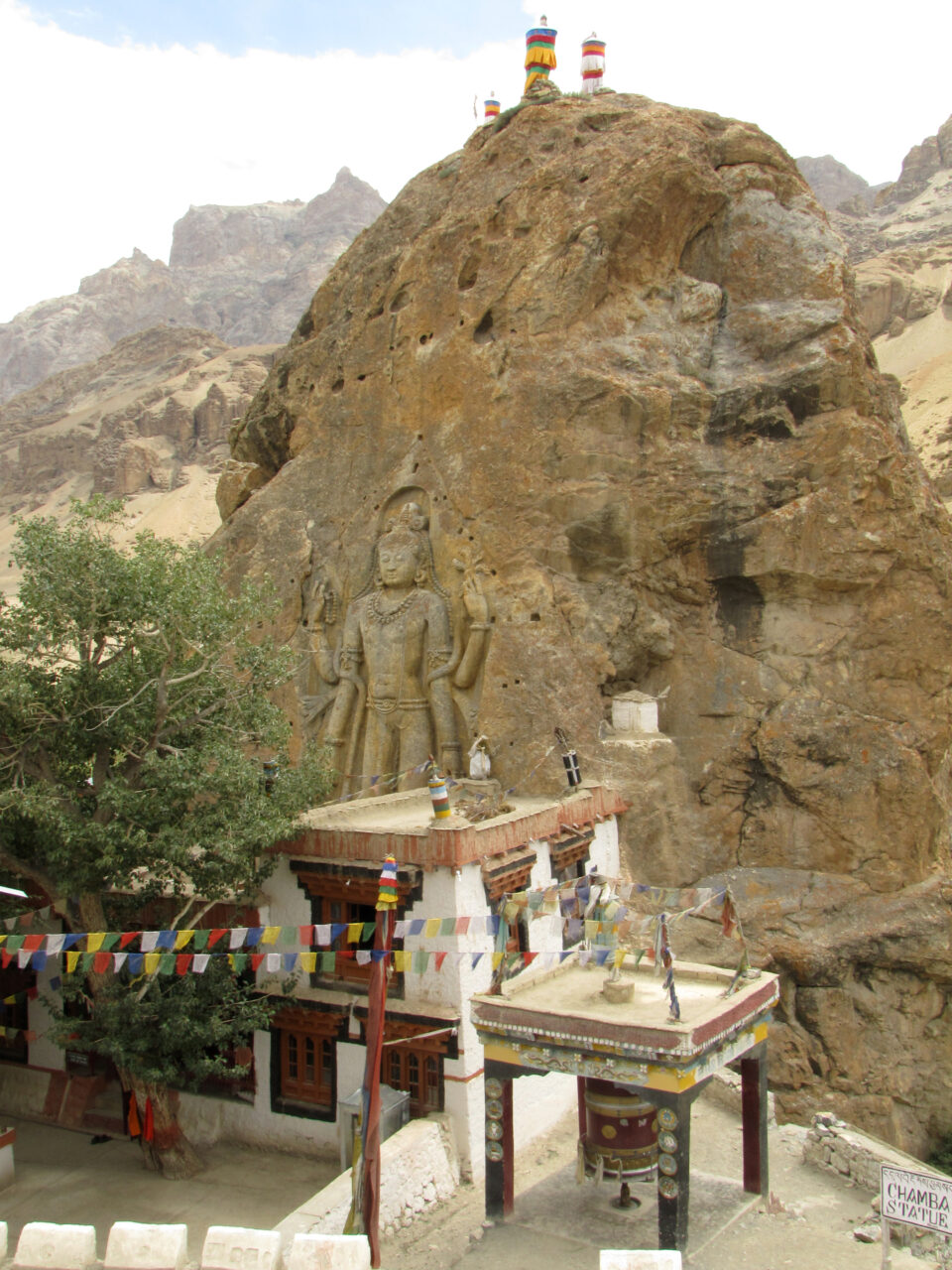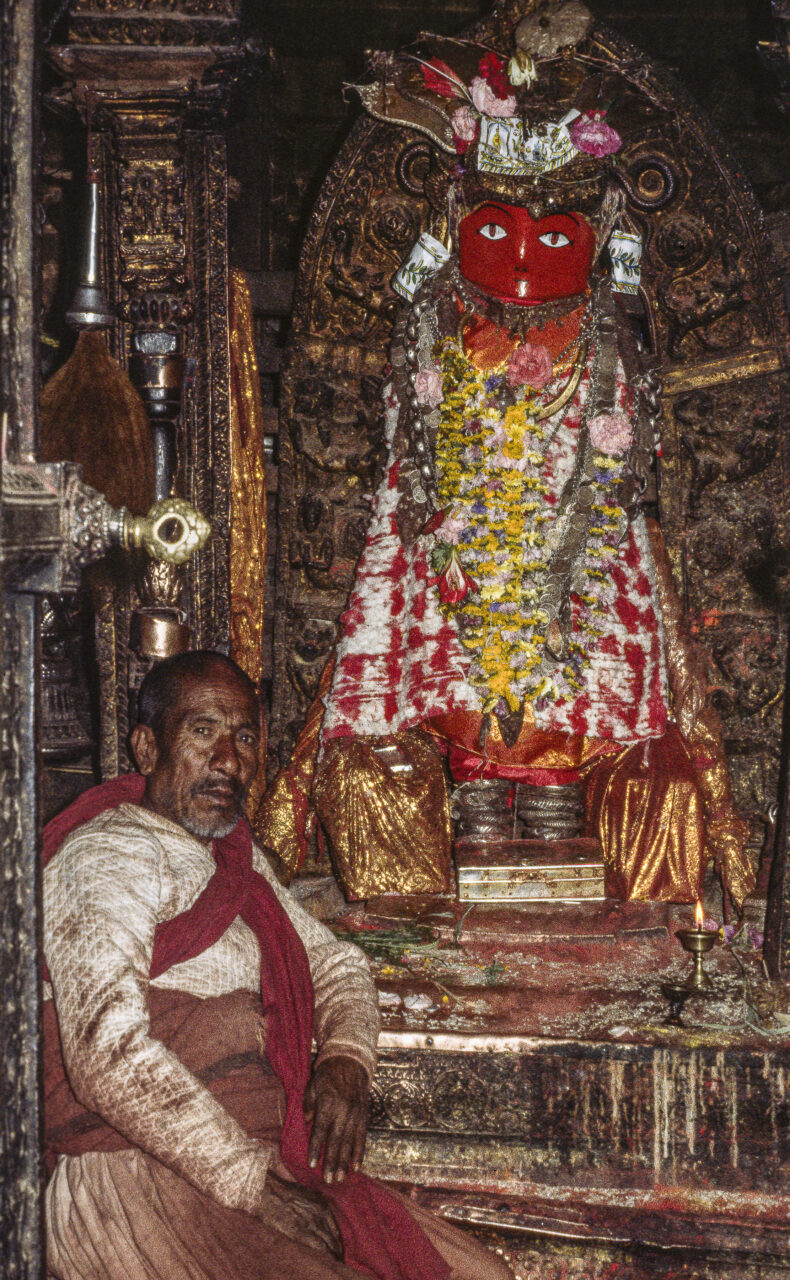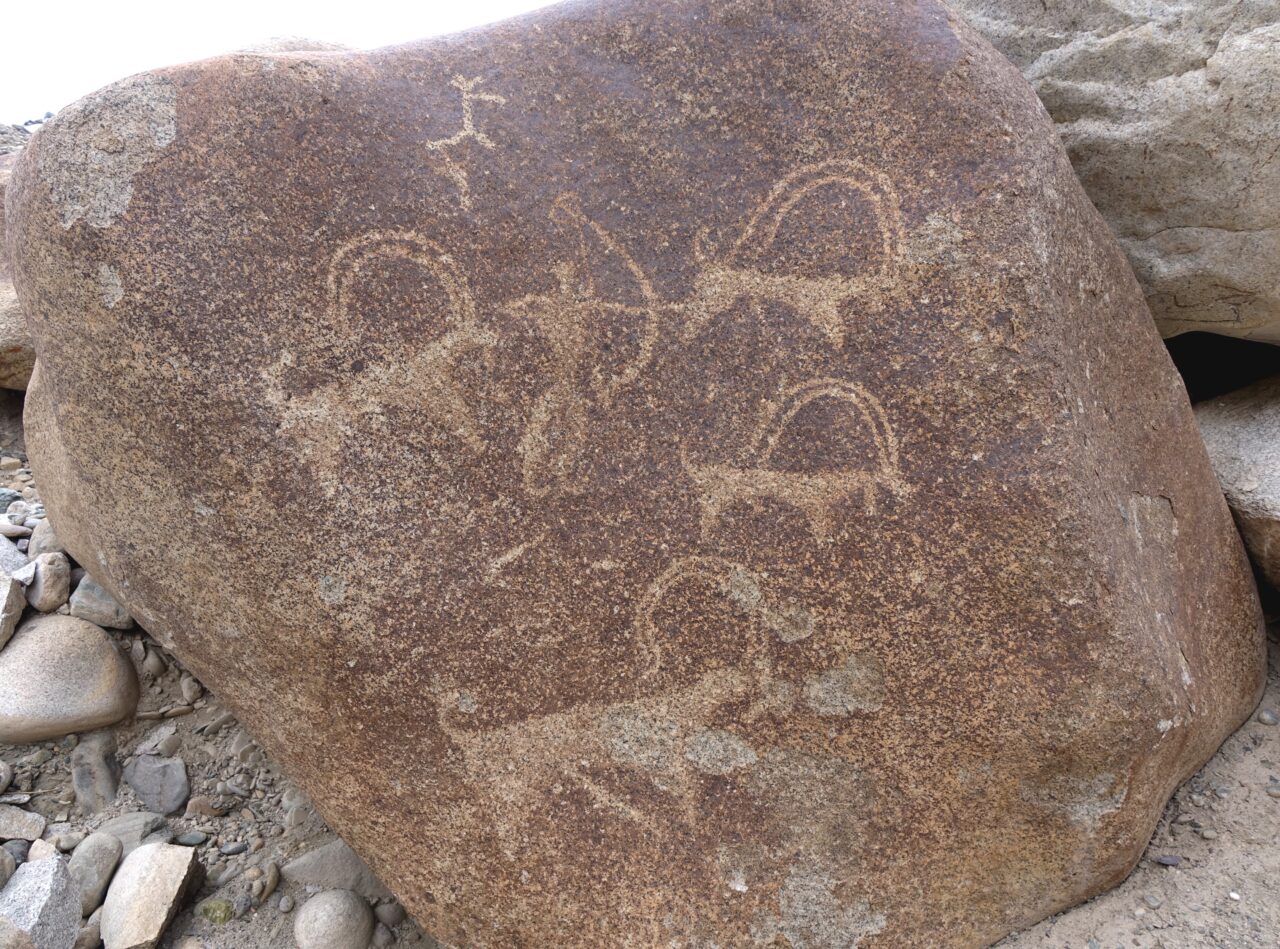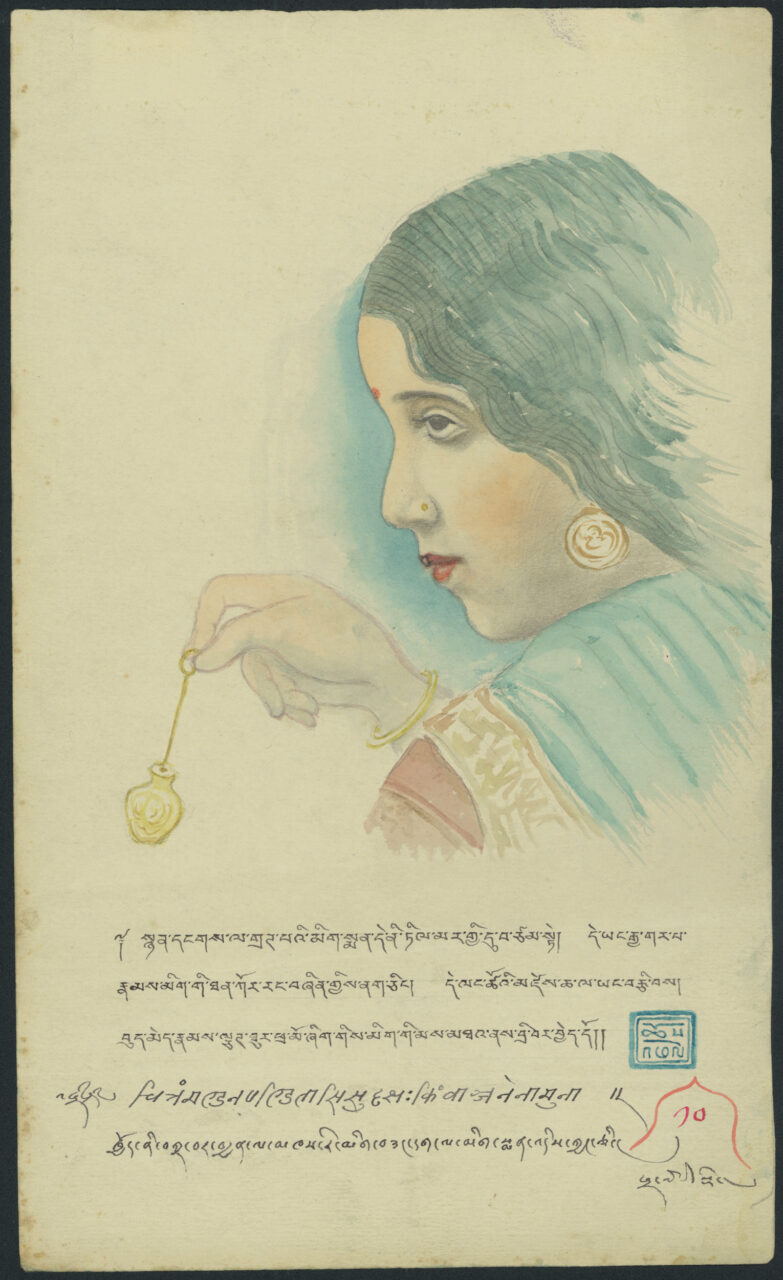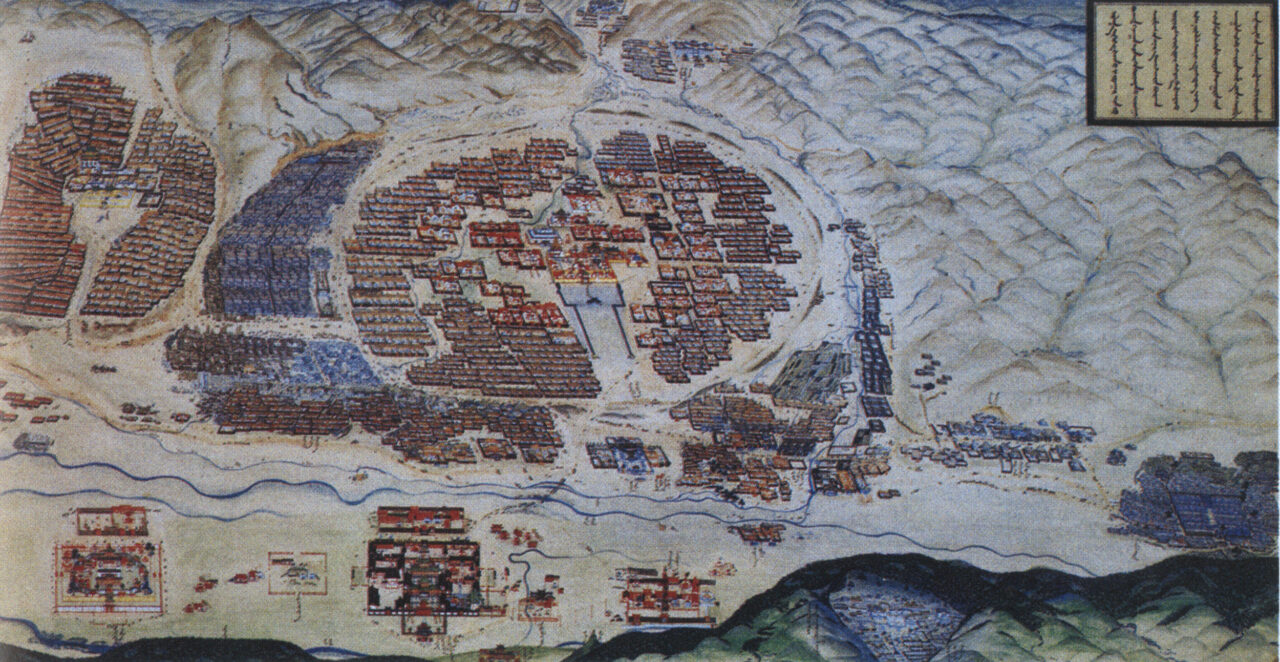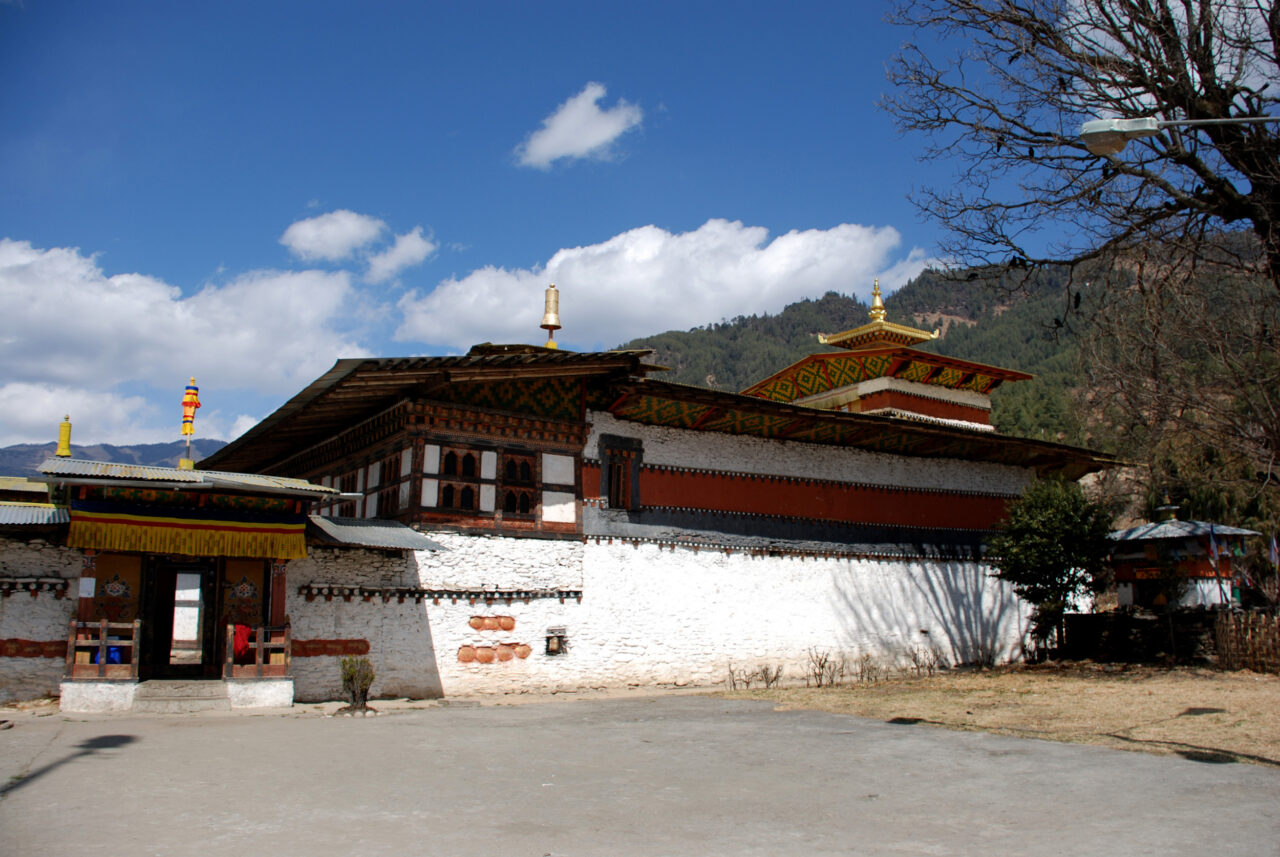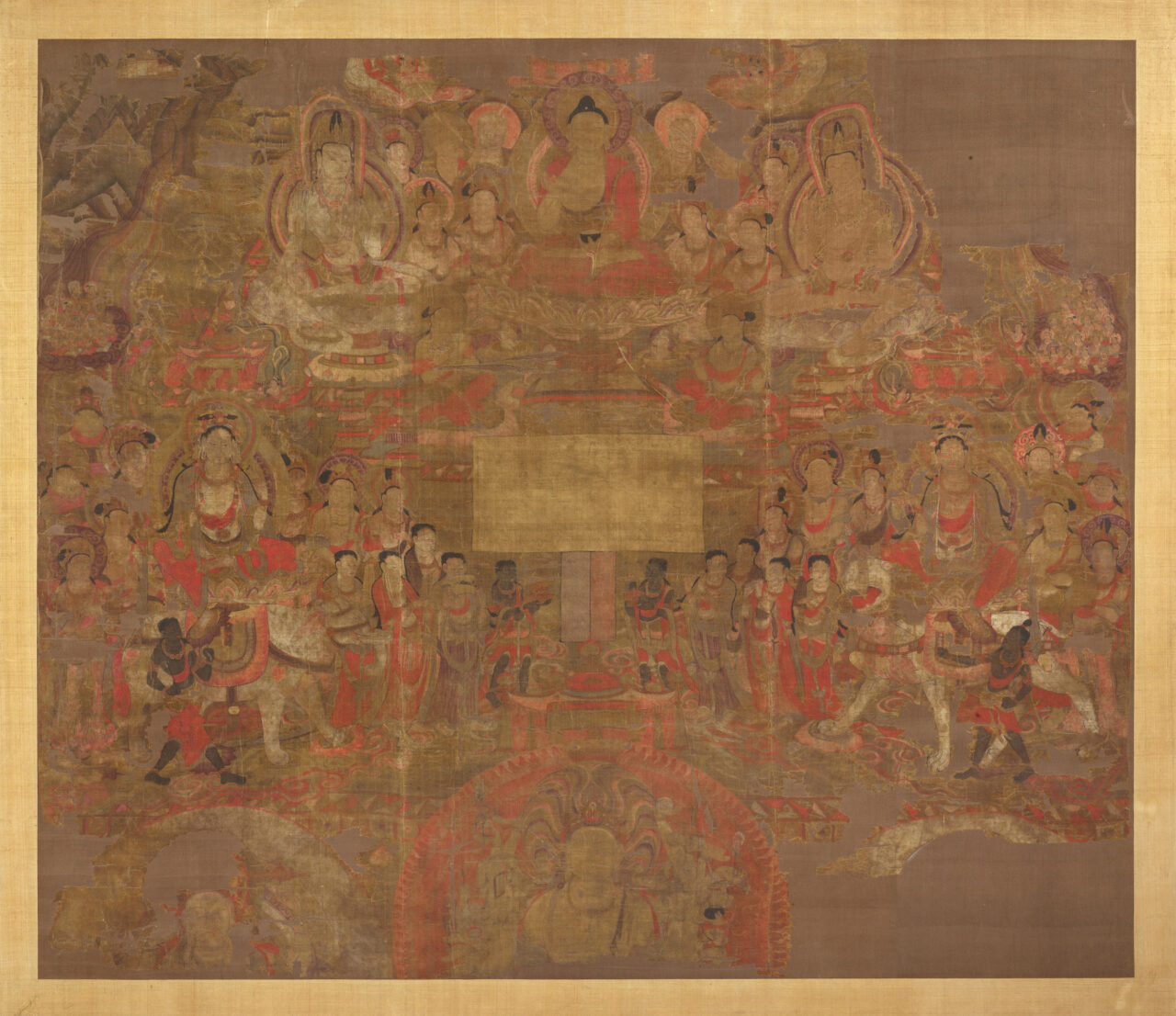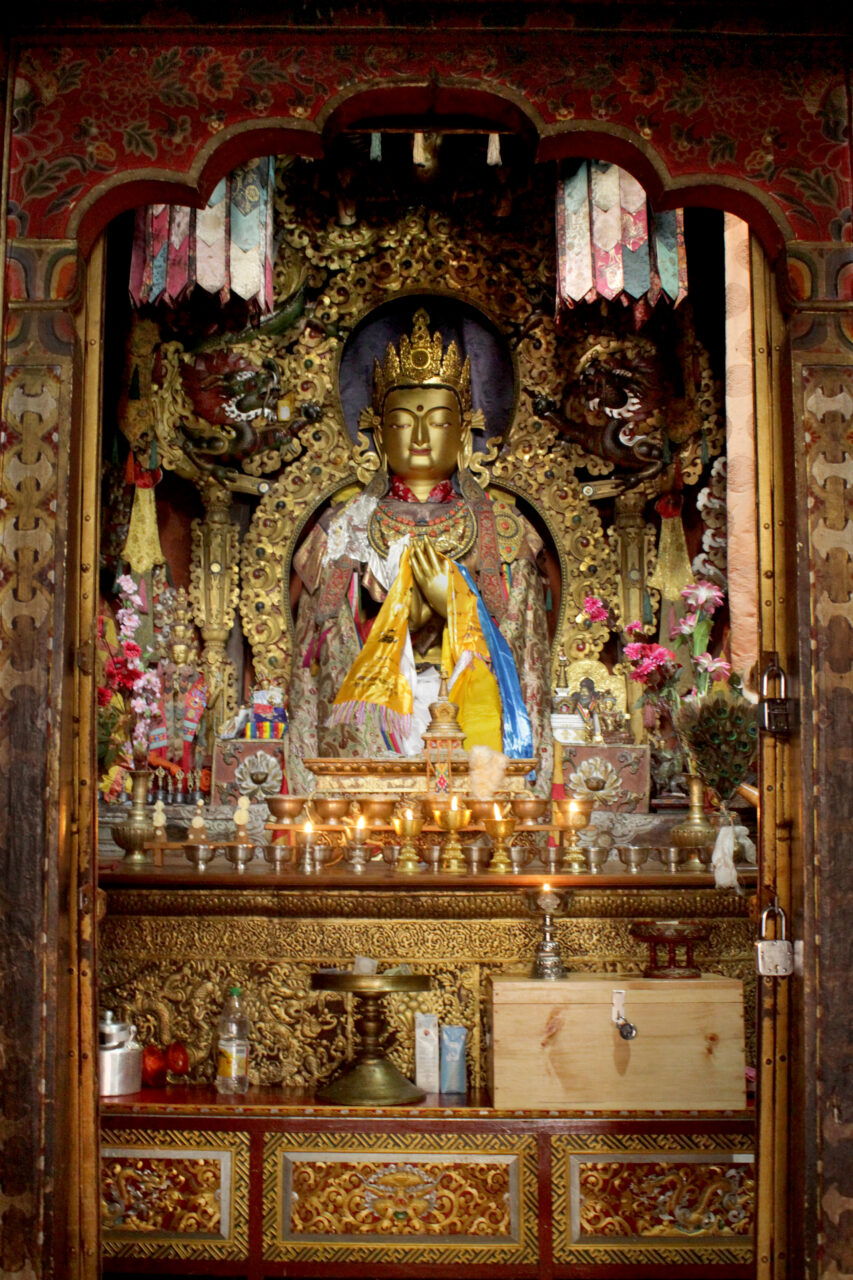Bodhgaya is the site where the historical Buddha Shakyamuni is said to have attained enlightenment. Located in what is now the Indian state of Bihar, Bodhgaya is the site of the Bodhi Tree, the “diamond throne” (vajrasana), and the Mahabodhi Temple. Bodhgaya is arguably the most important pilgrimage site for Buddhists.
The Bodhi Tree is the tree under which the historical Buddha Shakyamuni achieved enlightenment, located at Bodhgaya in what is now the Indian state of Bihar. The tree has been transplanted many times, and now many trees around the world claim to be descendants of the original tree.
Buddha Shakyamuni, or simply “The Buddha,” is an epithet for Siddhartha Gautama, the founder of the Buddhist religion. While the exact dates of Siddhartha’s life are debated, scholars generally place him in the sixth to fifth century BCE. According to early Buddhist narratives, Siddhartha was born a prince of the Shakya clan in what is now northern India and southern Nepal. Choosing to leave his palace and family for a life as a religious ascetic, Siddhartha achieved enlightenment while meditating under the Bodhi Tree. Siddhartha spent the rest of his life as a wandering teacher, gathering disciples to form the early Buddhist monastic community (sangha). Buddha Shakyamuni is revered all over the Buddhist world today.
In Buddhism, merit is accumulated positive karma, or positive actions, that lead to positive results, such as better rebirths. Buddhists gain merit by reciting mantras, donating to monasteries and those in need, performing pilgrimages, commissioning artworks, reproducing and reciting Buddhist texts, and other deeds with good intentions. It is believed that merit can also be transferred to others through rituals performed to gain merit for deceased family members help them achieve a better rebirth. Merit making is an important motivation for positive ritual action, and is a prerequisite for success of religious and even secular activity.
In Buddhism, individuals become awakened or achieve enlightenment (nirvana) but continue to live out the remainder of their natural lives. They pass on into the final state at their deaths, called “parinirvana.” Most importantly, this term refers to the Buddha Shakyamuni’s parinirvana at Kushinagara when he lay down between two trees and died. The event accompanied by many miracles is one of the Eight Great Events and one of the Twelve Deeds of the Buddha’s life, and is a very common topic for Buddhist illustration.
Stupas are monuments that initially contained cremated remains of Buddha Shakyamuni or important monks, his disciples, and subsequently other material and symbolic relics associated with the Buddha’s body, teaching, and enlightened mind. As representations of the Buddha’s presence in the world, stupas with their contents—texts, relics, tsatsas—continue to be important objects of Buddhist worship in their diverse forms of domed structures, multistoried pagodas, and portable sculptures. The original form of stupas was an earthen dome-shaped mound containing the remains in reliquary vessels or urns deposited within the innermost core. The dome would often be successively enlarged and surrounded by a path for a walk around in a clockwise direction and veneration (circumambulation)




